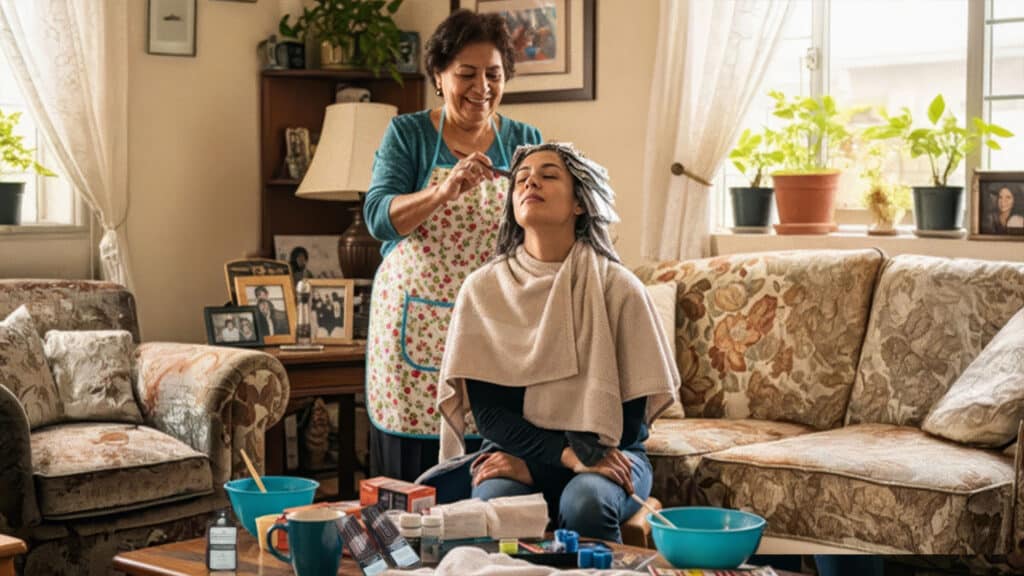Facial Cosmetic Procedures 101: Your Guide to Starting, Saving, and Aftercare
If you’re one of those who scroll endlessly on social media, you’ve probably seen a trend keep up with the times: facial cosmetic procedures. The addictive “before and after” posts have us all wondering if we need a touch-up.
And we’re not the only ones.
According to the American Academy of Facial Plastic and Reconstructive Surgery, cosmetic surgeries have increased by 10% since 2020. However, cosmetic procedures have increased the most. The Aesthetic Plastic Surgery National Databank reports that botox has risen by 54%, and filler treatments have increased by 75% since 2019.
If you’ve been asking yourself questions about cosmetic procedures, we’ve got you covered. From the procedures to how to care for your skin after treatment, here’s what you need to know.
What are facial cosmetic procedures, and why are they so popular?
Cosmetic surgery encompasses various procedures to improve the appearance of the face and body. Don’t get us wrong—all bodies are beautiful. But it’s always best to be well-informed before making any decisions, right?
Common facial procedures include eyelid surgery (blepharoplasty), Botox, brow lift, cheek lift, chemical peel, chin surgery, cosmetic dentistry, dermabrasion, facelift, facial fillers, laser hair removal, laser resurfacing, neck lift, otoplasty (ear surgery), rhinoplasty (nose surgery) and wrinkle treatments.
What are the most important factors to consider before taking the plunge and undergoing a cosmetic procedure?
Before deciding anything, it is essential to understand that this is a change in one’s personal image. As recommended by the Mayo Clinic, it is critical to understand the potential impact on your self-esteem and expectations.
Make sure your goals are realistic and that you are aware of the medical risks, the healing process, and the necessary changes in your lifestyle after the procedure.
Also, be aware of the financial costs and manage long-term health issues. In addition, it is essential to maintain a stable weight for certain procedures and to avoid smoking or nicotine products for a specific period before and after surgery.
But how can you determine the right procedure for your skin type and goals?
Proper preparation and understanding can help you achieve your desired results and ensure a safe recovery.
“You should consider looking into multiple options and vetting the provider injecting them to ensure they have ample experience and share the same aesthetic eye as you,” physician assistant and aesthetic medicine expert Denisse Serrano told FIERCE.
Serrano also recommends finding a provider who gives the best recommendation for the safest possible outcome.
A thorough discussion with a healthcare professional will help you understand these risks and how your medical history may influence the procedure.
Preparation involves considering your reasons for having surgery, setting realistic expectations, and understanding how the procedure may affect your lifestyle, including the need for recovery time and possible care.
Discuss your concerns openly with your healthcare professional, and make sure you have all the necessary information about the surgeon’s qualifications and experience.
On the other hand, prices can vary considerably
First, you should know that cosmetic surgery costs are not usually covered by insurance.
According to the American Society of Plastic Surgeons (ASPS), the average cost of the most popular procedures in 2020 varied significantly.
For example, breast augmentation had an average cost of $4,636, while a facelift cost about $8,005.
These costs generally cover the surgeon’s fee but do not include additional expenses such as anesthesia, operating room facilities, and related costs, which can add substantially to the total price.
More specialized procedures also have specific costs. Liposuction costs an average of $3,637, and abdominoplasty costs about $6,154.
However, nonsurgical procedures, such as Botox injections, cost approximately $466 per session, and laser hair removal costs $389 on average.
During the consultation phase, your surgeon must provide you with a detailed breakdown of all potential costs so that you can accurately budget for the procedure and associated aftercare.
However, as Denisse Serrano explained, some low-cost procedures continue to provide remarkable results. Some of them are Botox, chemical peels, or microneedling. Serrano assures us that “the Diamond Glow facial is a great entryway treatment to ease your way into the world of facial aesthetics and self-care.”
Once you’ve decided, here’s what you can expect from the procedure
Before the procedure, your surgeon will explain the potential changes to your body and the expected results, emphasizing the importance of realistic expectations. You’ll also discuss the concept of asymmetry and balance and any additional procedures that might enhance overall results.
Your healthcare team will review your medical history, medications, and lifestyle habits and provide detailed pre- and post-surgery instructions to minimize risks.
After the procedure, follow all care instructions closely to manage pain, prevent infection, and aid in healing.
Be prepared for initial bruising and swelling, which may take weeks to subside, and understand that final results can take months to become apparent.
Maintaining realistic expectations is crucial, as the goal is improvement rather than perfection, and additional surgeries may be necessary to achieve your desired outcome.
But perhaps most important is post-treatment care
For Denisse Serrano, the first 48 hours are crucial. She advises her clients not to exercise intensely, drink alcohol, take anticoagulants, take hot baths or saunas, or sleep in an upright position.
“Depending on what procedure is done, these steps can vary,” she added.
Likewise, Denisse assures that SPF, Vitamin C, and retinol can help prolong and maintain these treatments.
What about injectables?
These are the procedures we’ve perhaps seen the most on social media—where, by the way, you shouldn’t go for medical information. Botox, for example, is a wrinkle-relaxing agent injected to deactivate the muscle that creates the wrinkle, Denisse explained.
“Dermal fillers are used to sculpt the face and restore volume,” she continued. “They are jelly-like, and they are also longer lasting than Botox. Facial balancing involves a combination of techniques to deliver a more youthful outcome.”
Finally, if you’ve already had a procedure and are not satisfied, don’t despair
We all know cosmetic procedures can totally transform your look. But what if you change your mind later? Good news is, not all hope is lost! While some procedures are here to stay, others can be tweaked or even undone.
Injectable treatments like hyaluronic acid fillers are a breeze to reverse. If you’re not loving the look, an enzyme injection can zap them away almost instantly. However, more permanent procedures, like nose jobs or eyelid surgeries, need more effort to fix.
Reversing these involves reconstructing tissues, and while you might not get back to exactly how you looked before, adjustments are definitely possible.
Temporary fixes like Botox or dermal fillers naturally fade over time, so there’s no need for reversal. But with major surgeries like liposuction or tummy tucks, it’s a different story.
These procedures permanently remove fat and skin, so reversing them isn’t an option. You can make adjustments with additional surgeries, but going back to the original state is off the table.
Bottom line: if you’re considering cosmetic surgery, make sure to chat with your surgeon about what to expect and the possibility of reversals. Having realistic expectations and being well-informed will help you make the best choice for your beauty goals.
So, close TikTok and go to a medical provider for a complete evaluation.




